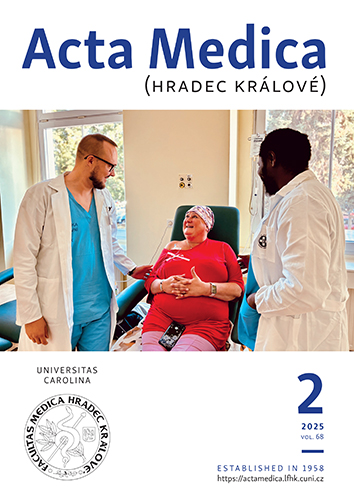ACTA MEDICA, Vol 61 No 2 (2018), 69–73
Topping Phenomenon with Recurrent Spinal Stenosis and Epidural Fibrosis Prevented with Oxidized Cellulose – a Case Report
Radek Hart
DOI: https://doi.org/10.14712/18059694.2018.55
published online: 14. 09. 2018
abstract
Lumbar spinal stenosis is a condition where the neural structures are compressed in the narrowed spinal canal and often situated only within a single specific segment of the spine, most frequently in the lumbar spine. A case report demonstrates a surgical solution of lumbar spinal stenosis with using oxidized cellulose as a prevention of post-operative adhesions and failed back syndrome. A female patient (68) with a significant pain of the lumbar spine lasting for a number of months due to advanced spondylosis, failing to respond to conservative treatment underwent instrumented, posterolateral fusion of affected segments. The patient re-arrived with pain due to spinal stenosis in another segments after 4 and then after 3 years. We repeatedly performed spinal fusion of the affected segments and applied an antiadhesive gel to the dural sac and the decompressed nerve roots to prevent the development of post-operative adhesions and the “failed back syndrome”. Last surgical solution included mobilisation of the simultaneously constricted dural sac through laminectomy. This time we covered the sac using a haemostat made of oxidized cellulose (Traumacel FAM). After this treatment, the patient was again without significant difficulties.
keywords: spinal stenosis; post-operative adhesion; prevention; oxidized cellulose; Traumacel FAM

Topping Phenomenon with Recurrent Spinal Stenosis and Epidural Fibrosis Prevented with Oxidized Cellulose – a Case Report is licensed under a Creative Commons Attribution 4.0 International License.
210 x 297 mm
periodicity: 4 x per year
print price: 150 czk
ISSN: 1211-4286
E-ISSN: 1805-9694
